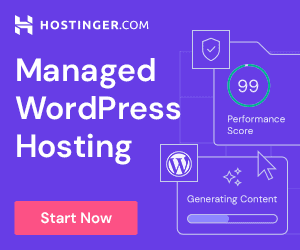Understanding expense ratios and trading costs in ETFs is key to maximizing your investments. These costs, though often overlooked, can significantly impact your returns. By breaking down each component and uncovering hidden expenses, this guide aims to help you make smarter, cost-effective choices in your ETF investments.
Discover how Atlas Quantum bridges traders and top-tier educational experts to help navigate the complexities of ETF trading costs.
Components of Expense Ratios
Expense ratios are a crucial factor when considering ETFs. They represent the annual fees charged by fund managers to cover various operational costs. Let’s break down what makes up these expense ratios:
- Management Fees: This is the primary component. It pays for the portfolio managers and analysts who make investment decisions.
- Administrative Fees: These cover the day-to-day operations, such as record-keeping, accounting, and customer service.
- Marketing Fees (12b-1 Fees): Some funds charge this fee to cover distribution and marketing expenses. It can be avoided by choosing funds that don’t include it.
- Other Operating Expenses: This can include legal fees, audit fees, and custodial fees. Though typically smaller, they still contribute to the total expense ratio.
Each component, no matter how small, adds up. Keeping an eye on these helps investors understand what they’re paying for and how it impacts their overall returns.
How Expense Ratios Impact Returns
Expense ratios directly affect your investment returns. Let’s say you invest in an ETF with a high expense ratio. Over time, this can eat into your gains. Imagine you’re expecting a 7% return on your investment, but the expense ratio is 1%. This means your net return would drop to 6%.
- Compounding Effect: Over long periods, even small differences in expense ratios can lead to significant differences in returns due to the compounding effect.
- Comparison Shopping: Always compare the expense ratios of similar ETFs. For example, if two funds track the same index but one has a lower expense ratio, it’s likely the better choice.
- Net Returns: Focus on the net return, which is the return after deducting expenses. This gives a clearer picture of what you’re actually earning.
By understanding and comparing expense ratios, you can make smarter investment choices and keep more of your returns in your pocket.
Hidden Costs in ETF Trading: Beyond the Obvious
When trading ETFs, there are costs that aren’t immediately apparent. These hidden costs can affect your investment strategy if not properly understood. Here’s a look at some of these less obvious expenses:
- Bid-Ask Spread: This is the difference between the buying price (ask) and the selling price (bid). A wider spread means higher trading costs.
- Market Impact Costs: Large trades can move the market, causing the price to shift unfavorably. This is more pronounced in less liquid markets.
- Trading Commissions: While many brokers offer commission-free trades, this isn’t universal. Be aware of what your broker charges.
- Taxes: Depending on your country, taxes on dividends and capital gains can be a significant cost. Check the tax implications before trading.
Knowing these hidden costs helps in making more informed decisions, ensuring that your trading strategy is cost-effective.
The Interplay Between Trading Volume and Costs
Trading volume and costs are closely linked. Here’s how volume impacts the cost of trading ETFs:
- Liquidity: Higher trading volume generally means more liquidity. More liquidity leads to tighter bid-ask spreads, reducing trading costs.
- Price Stability: ETFs with higher volumes tend to have more stable prices. This stability can reduce the risk of price swings that could adversely affect your trades.
- Market Depth: High volume indicates a deeper market, meaning there are more buy and sell orders at various price levels. This can help in executing larger trades without significantly affecting the market price.
- Investor Confidence: High volume can be a sign of investor confidence and interest in the ETF, often leading to better performance and lower volatility.
When choosing ETFs, consider trading volume as a key factor. Higher volume can help lower your costs and provide a smoother trading experience.
Tips for Investors
- Research: Always do your homework. Look into expense ratios, trading volume, and hidden costs before investing.
- Consult Experts: If you’re unsure, talk to a financial advisor. They can provide insights tailored to your specific needs and goals.
Keeping these points in mind will help you navigate the complexities of ETF investing, ensuring that you make informed and cost-effective decisions.
Conclusion
Navigating the costs of ETFs is crucial for smart investing. By understanding expense ratios, hidden trading costs, and the impact of trading volume, you can optimize your returns. Always research thoroughly and seek expert advice to make informed decisions and keep more of your hard-earned money.







